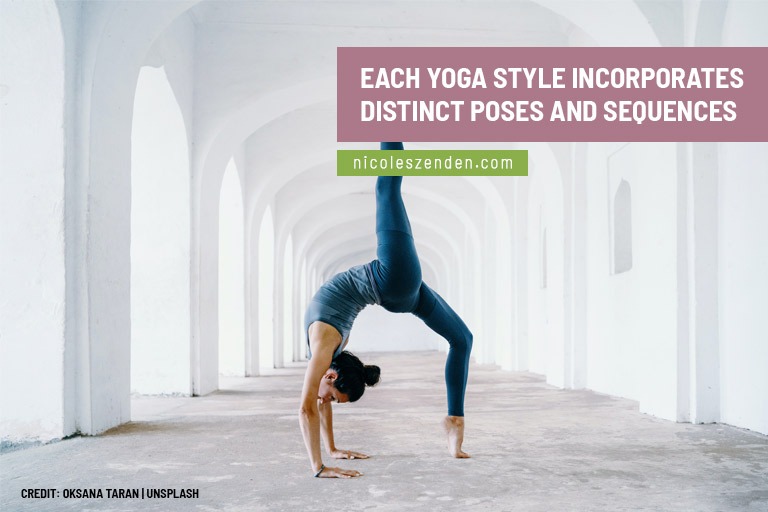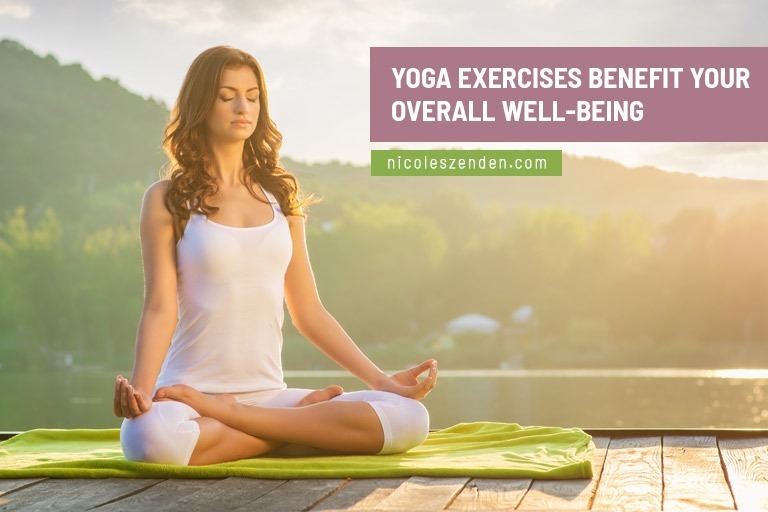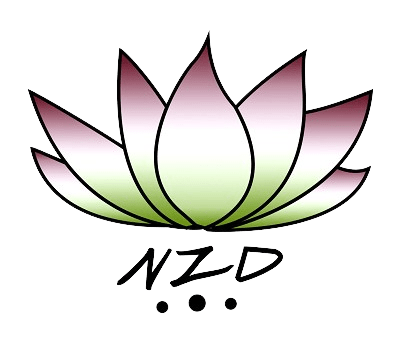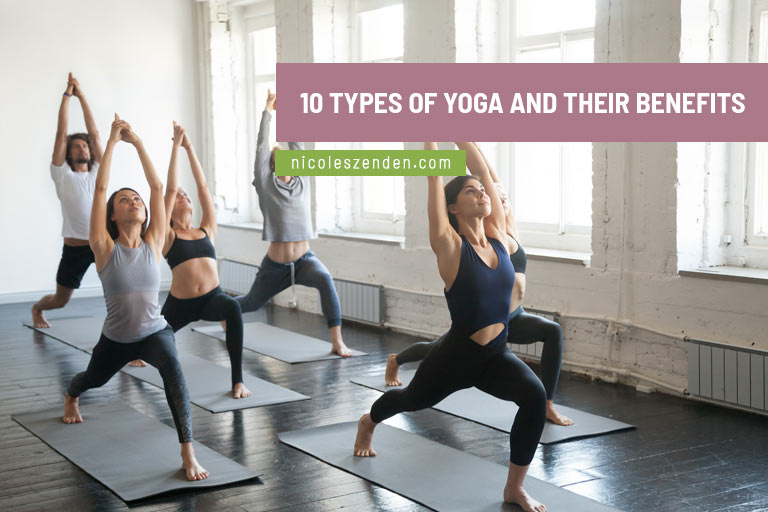Yoga is an ancient practice that originated in northern India over 5,000 years ago. Globally, it has captured people’s attention for its remarkable physical, mental, and spiritual benefits. When signing up for yoga in Toronto, you should find the style that resonates with you.
Understanding the different forms of yoga can help you embark on a transformative journey ideally suited to your goals and fitness level, whether you seek yoga for fitness, meditation, or relaxation. This article will discuss the most popular yoga forms and highlight the benefits of including yoga in your wellness plans.
10 Forms of Yoga

Here are yoga styles that offer something for everyone:
1. Hatha yoga
Hatha yoga, an ancient yoga system, encompasses a wide range of styles and practices. It cultivates harmony and tranquillity in the mind and body using physical postures (asanas) and breathing exercises (pranayama). Because it is gentle and unhurried, it’s suitable for people who seek yoga for beginners or those who want to relax and meditate.
2. Vinyasa yoga
Vinyasa yoga emphasizes the seamless coordination of breath and movement while performing postures. Various practices, such as Ashtanga, power yoga, and prana, can fall under the umbrella of vinyasa flows. Vinyasa classes include a variety of poses and sequences depending on the instructor.
3. Iyengar yoga
Iyengar yoga, named after its renowned founder B.K.S. Iyengar, distinguishes itself through its unwavering focus on the intricate details of each posture. In an Iyengar yoga class, expect poses to be held longer than other yoga styles. This allows meticulous observation and adjustment of musculoskeletal alignment.
4. Ashtanga yoga
Ashtanga yoga, derived from the Sanskrit term “Eight Limb Path,” embodies a disciplined and structured approach to practice. Originating in Mysore, India, practitioners gather to engage in this form of yoga at their own pace, with Mysore-led Ashtanga requiring familiarity with the series.
Ashtanga yoga demands physical exertion as it swiftly transitions from one pose to another. Unlike vinyasa yoga, this system follows predetermined sequences to be performed in a specific order.
5. Bikram yoga
During Bikram, or hot yoga, participants engage in 26 poses and 2 breathing exercises within an artificially heated room. In a Bikram class, you can expect the same order of postures for 90 minutes while the room has a temperature of 105°F and a humidity level of 40%. So, be prepared to sweat as the intense heat and challenging poses test your physical and mental endurance.
6. Yin yoga
Yin yoga originated in the late 1970s. Paulie Zink, a martial arts expert and Taoist yoga teacher, founded and taught it initially in the United States. Today, this form of yoga is widespread across North America and Europe.
During a yin yoga session, you can expect a slow-paced practice featuring seated postures encouraging stillness and inner reflection. This meditative approach allows you to cultivate tranquillity and harmony within.
Yin yoga is also suitable for beginners, as the postures can be held for varying durations, ranging from 45 seconds to 2 minutes. In these relaxed classes, gravity takes the lead, gently guiding your body into deeper stretches.
7. Prenatal yoga
Prenatal yoga is a specialized practice designed to cater to the unique needs of expectant mothers at all stages of pregnancy. By incorporating pelvic floor exercises, focused breathing techniques, and gentle movements, prenatal yoga provides a nurturing space for moms-to-be to connect with their changing bodies and the growing life within.
When practicing prenatal yoga, props ensure stability and support throughout the poses. The emphasis is less on extreme flexibility and more on maintaining a stable and balanced foundation.
8. Restorative yoga
Restorative yoga creates a nurturing space to experience profound physical and mental respite by incorporating gentle and supported postures. During a restorative yoga class, you will spend more time in fewer postures, allowing your body to surrender and let go. The poses are modified to be accessible and comforting, making them suitable for practitioners of all levels.
9. Jivamukti yoga
Jivamukti yoga, founded by Sharon Gannon and David Life in 1984, offers a blend of vinyasa-style flow and spiritual teachings rooted in Hindu philosophy. Inspired by their studies with influential teachers, Jivamukti yoga incorporates elements of Ashtanga yoga and emphasizes a deep connection to the Earth as a living entity. This practice also encourages a vegetarian lifestyle as part of its philosophy.
10. Kundalini yoga
Introduced to the Western world by Yogi Bhajan, Kundalini yoga offers a distinct experience that sets it apart from other forms of yoga. It is a profound and energizing practice emphasizing enhanced breathing and intentional energy movement throughout the body.
You can expect a blend of physical exercises, breathing techniques, and meditative practices during a Kundalini yoga class. The repetition of movements and rhythmic breathwork help activate and channel the Kundalini energy, facilitating a deeper connection to your inner self and spiritual growth.
Benefits of Yoga

Now that you know the different styles of yoga, here are some of the benefits yoga classes in Toronto can provide to your overall well-being:
Lowers blood pressure and cholesterol
The gentle movements, deep breathing, and relaxation techniques involved in yoga help to lower blood pressure and reduce cholesterol levels.
Builds and tones muscles
Yoga is not just about flexibility and relaxation; it also offers significant muscle strength and toning benefits. Yoga engages and challenges different muscle groups in your body through various poses and sequences. As you progress in your practice, like yoga for hips, you’ll notice improved muscle definition and overall body strength.
Encourages a healthy metabolism
During a yoga session, you combine physical movement, breath control, and mindfulness that stimulates metabolic processes. Practicing yoga regularly can enhance your body’s ability to convert food into energy, promoting a balanced and efficient metabolism.
Increases flexibility and balance
Yoga improves the range of motion and joint flexibility. With regular practice, you’ll notice increased suppleness and improved balance, making everyday movements easier and reducing the risk of injuries.
Provides back pain relief
Yoga for back pain relief is a natural and effective solution. Gentle stretches, spinal twists, and strengthening exercises alleviate tension, improve posture, and promote proper spine alignment.
Reduces anxiety and depression
Through mindfulness breathing, relaxation techniques, and meditation, yoga reduces anxiety and alleviates depression.
Helps you sleep better
Relaxation techniques, gentle movements, and mindful breathing help to calm the mind and relax the body, preparing you for restful sleep. By establishing a bedtime yoga routine, you can promote better sleep patterns and wake up feeling refreshed.
Promotes better self-care
Yoga encourages holistic self-care. Carving out space for yourself, engaging in mindful movement, and connecting with your inner self promotes increased self-awareness and self-love.
Yoga, a timeless practice that has evolved through the ages, offers ancient wisdom and modern relevance. While contemporary yoga emphasizes physical fitness and inner harmony, its roots lie in cultivating mental focus and spiritual growth. Today, you’ll find various yoga styles, each catering to different expectations and physical agility levels.
Whether you’re looking for yoga for flexibility or relaxation, we can suggest a class that will help you begin a transformative practice and discover mind, body, and spirit harmony. Schedule your first yoga session with Nicole’s Zen Den; contact us by dropping an email at info@nicoleszenden.com.

